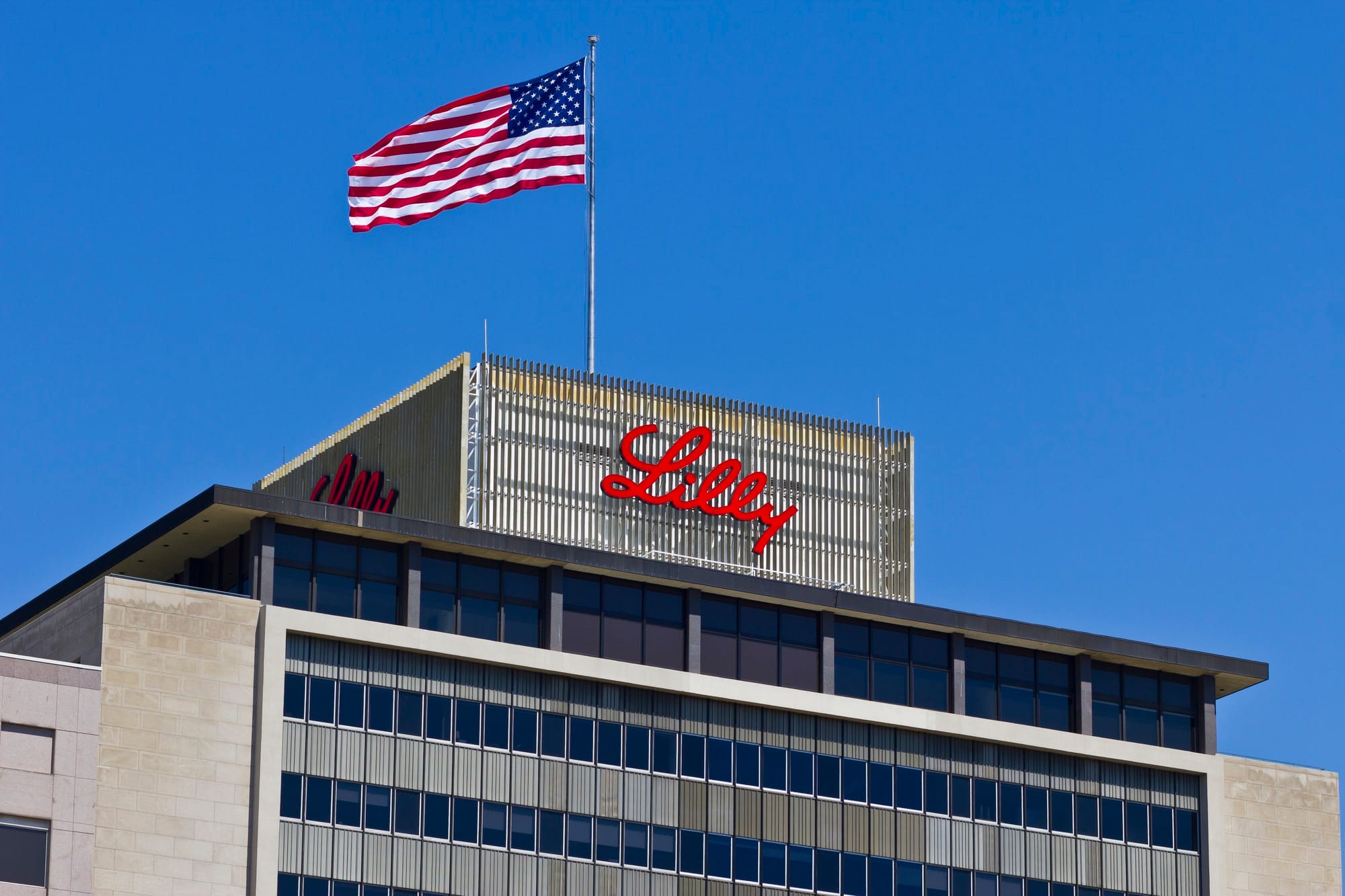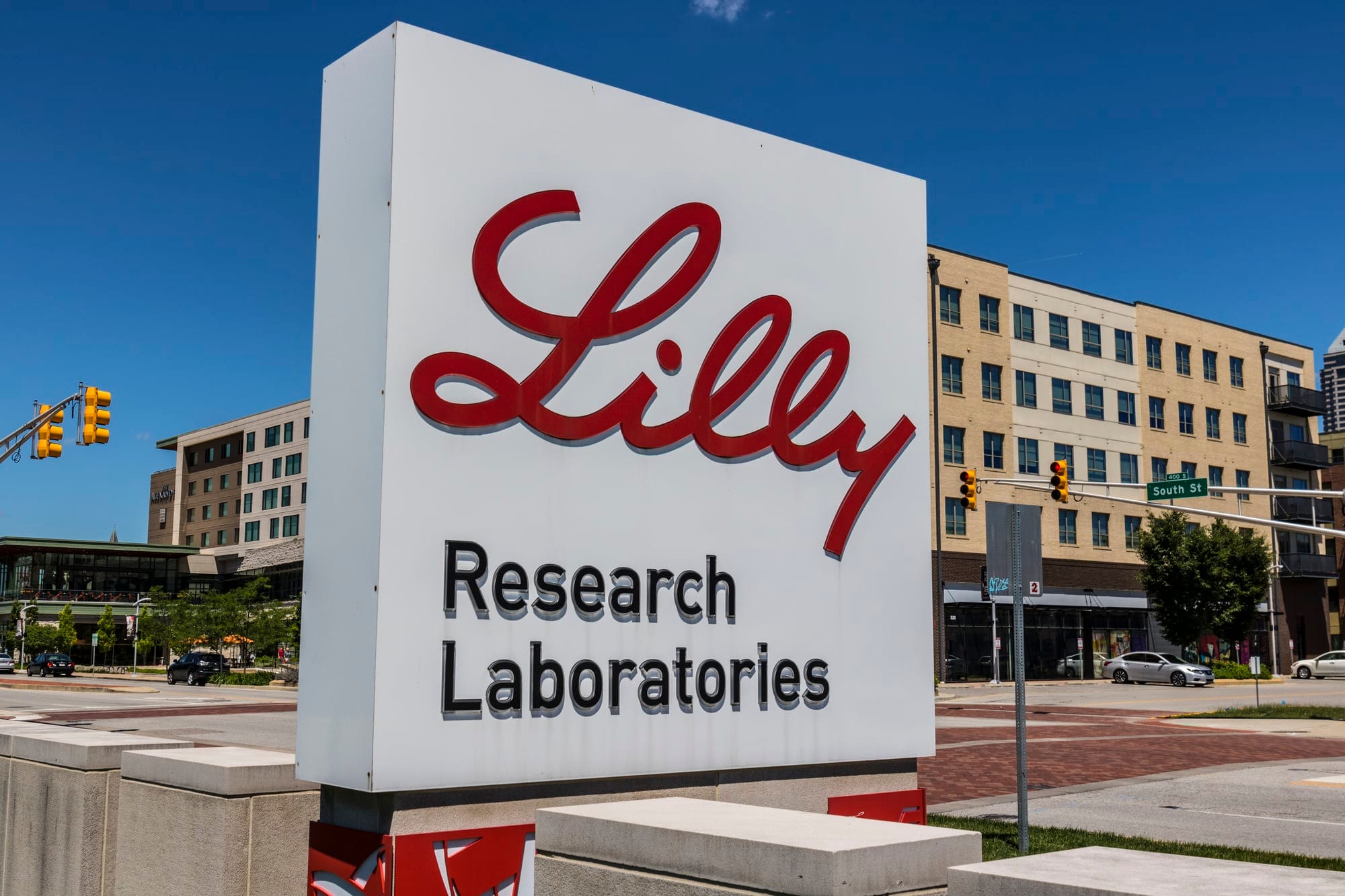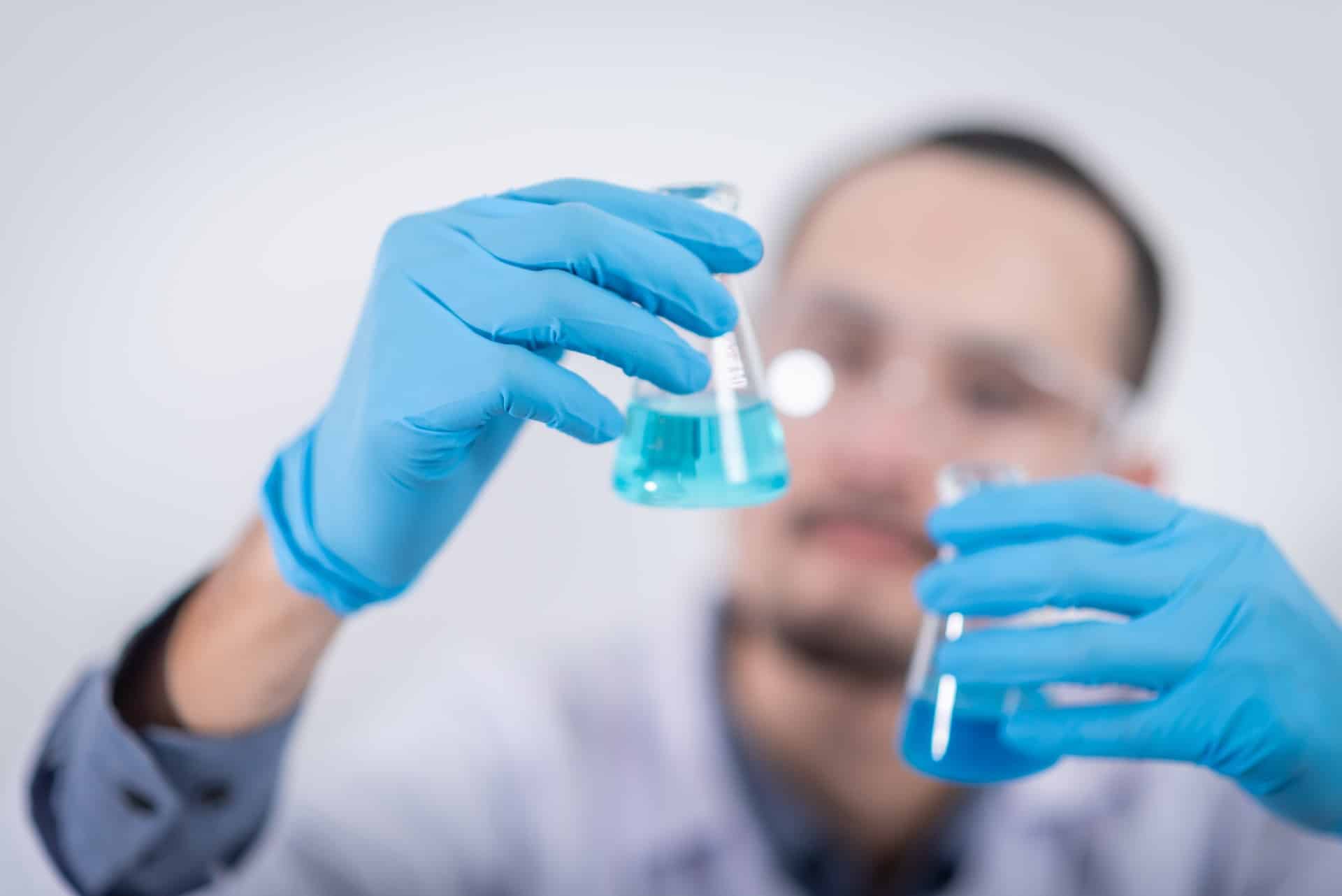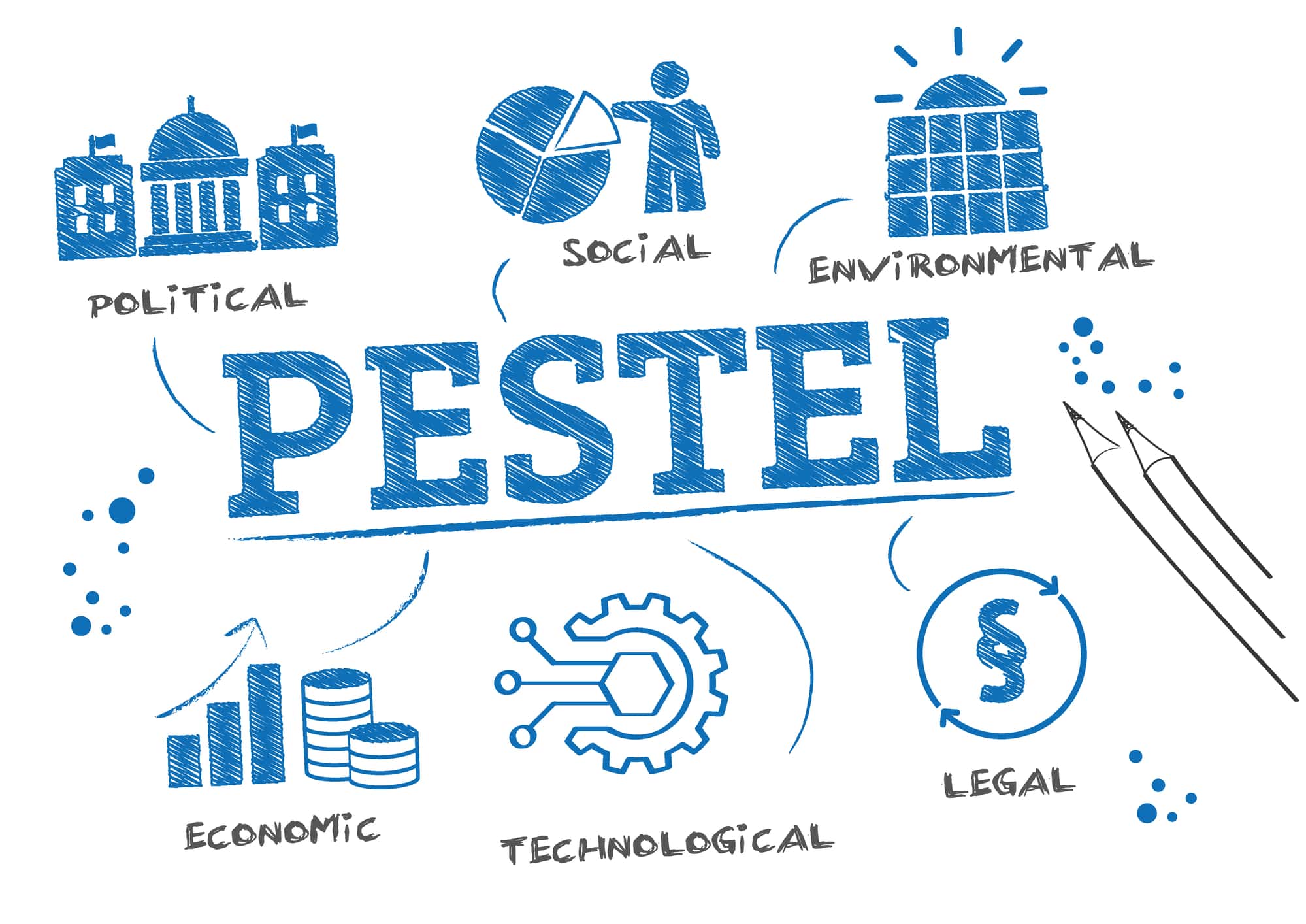Dive into the strategic insights of Eli Lilly PESTLE analysis and uncover how this pharmaceutical giant navigates global challenges, drives innovation, and secures industry leadership.
You must have heard the saying, "Health is wealth." Without good health, it is impossible to enjoy the blessings of life. Have you ever realized how vital pharmaceutical companies are in providing a healthy life? Probably not.
A few centuries back, when pharmaceutical companies didn't exist, the mortality rate was pretty high. However, as pharmaceutical companies came into existence, people started living healthy lives.
Although a lot of pharmaceutical companies exist in today's era, few pharmaceutical companies are considered the most reliable. Eli Lilly is one of the biggest and most reliable pharmaceutical companies.
After looking at the scale of operations of Eli Lilly, today we have decided to conduct an Eli Lilly PESTLE Analysis to see what external factors impact the operations of Eli Lilly.
Before proceeding further and conducting the PESTLE analysis, looking at Eli Lilly's history is important.

Eli Lilly is a renowned pharmaceutical company founded by an Army veteran who was a pharmaceutical chemist. He named the company Eli Lilly because his name was the same.
Eli Lilly was established in 1876 in the US. The main objective of Eli Lilly was to produce high-quality medicines. Soon the company gained recognition due to its superior quality medicines.
The pharmaceutical company gained more recognition when it developed gelatin-coated pills that allowed for more consistent dosing of medicines.
Eli Lilly kept expanding its operations in the US. In the early 20th century, Eli Lilly started mass production of insulin. Besides that, the pharmaceutical company played a significant role in developing antibiotics and penicillin during World War 2.
After World War 2 ended, Eli Lilly decided to expand its operations across the globe. It opened several branches in different countries. Over the years, Eli Lilly kept researching and focused on providing quality medicines.
The pharmaceutical company also developed medicines for mental illness, cardiovascular diseases, and cancer.
During the 1980s and 90s, the pharmaceutical company diversified its portfolio and entered biotechnology. Eli Lilly soon developed Prozac, which is a renowned antidepressant.
In the 21st century, the pharmaceutical company further expanded its operations and started focusing on developing medicines for different diseases.
Eli Lilly is a significant player in the pharmaceutical industry currently. It played a significant role in providing COVID-19 vaccines. Moreover, Eli Lilly also provides medicines for cancer and Alzheimer's disease.
Eli Lilly has been competing in the market for more than 147 years. It has managed to maintain its position in the market. Currently, Eli Lilly is one of the top pharmaceutical companies.
Eli Lilly has manufacturing plants in 7 countries. However, it supplies medicines in more than 125 countries. The pharmaceutical company is considered to be huge in terms of revenue. In 2023, the company managed to generate revenue of $29.5 billion.
Besides generating huge revenues, Eli Lilly employs more than 40,000 people globally. Now that we have discussed the history and the current operations of Eli Lilly, let's proceed further and conduct the PESTLE analysis of Eli Lilly.
Before proceeding further, we need to discuss a PESTLE analysis. PESTLE analysis is a tool that businesses use to examine how different external factors impact a business.
A PEST analysis examines the impact of political, social, economic, environmental, technological, and legal factors on a business. Now that we have discussed why businesses use PESTLE analysis, let's proceed further and discuss how political factors impact the operations of Eli Lilly.
Political Factors That Affect Eli Lilly
Political factors are the factors that represent the domestic and international political environment. Moreover, they also account for regulations made by the government. In this section, we will look at how different political factors impact the operations of Eli Lilly.
Government regulations have a significant impact on the operations of Eli Lilly. Government policies regarding the pricing of medicines impact the sales of Eli Lilly. If the prices are set at a very high level, then people won't be able to afford them. As a result, the sales of Eli Lilly will fall.
Moreover, government policies regarding access to medicines also impact Eli Lilly's sales. If there are strict policies regarding patients' access to medicines, then the sales of Eli Lilly's medicines will decrease.
Other than that, political stability impacts the operations of Eli Lilly. In countries where the government changes frequently, Eli Lilly struggles to operate because every government imposes new policies on drugs, so there is a lack of consistency and continuity in the policies in politically unstable countries.
Other than that, tax rates have an inverse relationship with the profit generated by Eli Lilly. In countries with high tax rates for pharmaceutical companies, Eli Lilly cannot generate much profit.
Furthermore, global conflicts also impact the operations of Eli Lilly. If a country gets engaged in a war, it will be difficult for Eli Lilly to continue its operations there.

Economic Factors That Affect Eli Lilly
Economic factors are the factors that are linked with the global and domestic economy. Like any other business, Eli Lilly is also impacted by economic factors. This section will discuss how various economic factors impact Eli Lilly.
Economic prosperity has a significant impact on Eli Lilly. In countries where people have high buying power, the sales of Eli Lilly are high. However, in countries where people cannot afford expensive medicines, the sales of Eli Lilly are low.
Moreover, interest rates impact Eli Lilly significantly. Interest rates represent the cost of borrowing. When the interest rate in an economy is high, it gets difficult for businesses to take loans.
Similarly, when the interest rates are high, Eli Lilly won't be able to borrow money from the banks, so it won't be able to invest in research and capital.
Furthermore, Eli Lilly is an international brand. It operates in more than 125 countries. Fluctuations in exchange rates would impact the prices of Eli Lilly significantly. Due to these fluctuations in exchange rates, Eli Lilly's profits will be affected.
Besides that, inflation impacts the sales of Eli Lilly significantly. In countries where the inflation rate is high, the prices of Eli Lilly's medicines are also high. Hence, the demand for Eli Lilly medicines would be low in such countries due to high prices.
Social Factors That Affect Eli Lilly
Social factors are associated with a society's societal norms and culture. This section will examine how different social factors impact Eli Lilly.
Every society has different practices that people follow. In some societies, people avoid taking medicines for diseases. They prefer home remedies and herbal treatment instead of taking medicines sold by pharmaceutical companies.
In such countries, Eli Lilly would struggle since the demand for the medicines Eli Lilly would be less. Moreover, there isn't much awareness about diseases and their treatments in many societies. People in such societies are less educated, due to which they have a lack of awareness regarding diseases and modern medicines.
Eli Lilly won't be able to make huge profits in such societies since the demand for medicines will definitely be low. Furthermore, the demographics of society affect the sale of Eli Lilly. In societies with a high percentage of elderly people, there would be a high demand for medicines. Eli Lilly can make high profits in such societies.
Other than that, access to healthcare impacts Eli Lilly significantly. In societies with limited access to healthcare, people are not treated. As a result, the demand for medicines is low in such societies.

Technological Factors That Affect Eli Lilly
Technological factors are linked with technology and innovation. In this section, we will look at how different technological factors impact the operations of Eli Lilly.
Technological advancements impact the operations of Eli Lilly significantly. Computational modeling and bioinformatics tools have emerged over the years, which help in drug design and predicting drug interaction. These technological advancements make Eli Lilly's medicines more effective.
Besides that, Eli Lilly can use data analytics to analyze large data sets. The results of the data analysis can help Eli Lilly develop an effective medicine. Furthermore, Eli Lilly can use data analytics to identify its potential customers and target groups.
Eli Lilly can adopt automation to enhance the quality of medicines and increase their efficiency. Moreover, automation can decrease the need for labor. This will reduce the operational cost of Eli Lilly. As a result, the profits of the company will increase.
Moreover, Eli Lilly can make use of social media. It can market its product on social media. This can increase awareness among people and increase the customer base of Eli Lilly.
Besides that, Eli Lilly can open an online store where people can buy medicines. By doing so, it can provide medicines to people more conveniently. As a result, the sales of Eli Lilly can increase.
Legal Factors That Affect Eli Lilly
Legal factors are the factors that are associated with the laws and regulations. Moreover, they also represent the legal framework of a country. This section will examine how different legal factors impact Eli Lilly.
Eli Lilly must ensure its medicines abide by quality assurance laws. Since poor-quality medicines can be fatal, law enforcement agencies pay great attention to pharmaceutical companies.
Suppose Eli Lilly's medicines are not up to the mark. In that case, law enforcement agencies might seal the pharmacies of Eli Lilly and impose heavy fines on them. Besides that, Eli Lilly has a large workforce and must ensure that none of its employees are being treated unfairly.
Moreover, it also has to make sure that no racist treatment is given to its employees who belong to different ethnic groups.
Besides that, the pharmaceutical company must be careful while dealing with customers' data. Suppose there is a data breach from Eli Lilly's devices. In that case, the government can impose heavy fines on Eli Lilly for violating data protection laws.
Other than that, Eli Lilly has to ensure that it has fair business practices. In case of any fraud or concealment of assets, the pharmaceutical company might have to pay heavy fines and face bans.

Environmental Factors That Affect Eli Lilly
Environmental factors are the factors that are associated with the environment. Like many other companies, Eli Lilly is also impacted by environmental factors. This section will discuss how various environmental factors impact Eli Lilly.
As global warming is occurring, the frequency of natural calamities has increased. Storms on land occur quite frequently. These natural calamities impact the operations of Eli Lilly. Since Eli Lilly supplies medicines in 125 countries, it requires a smooth transportation network.
However, due to natural calamities, the supply chain of Eli Lilly gets disrupted. As a result, Eli Lilly experiences financial losses.
Besides that, environmental regulations imposed by businesses significantly impact Eli Lilly. Environmental regulation prohibits Eli Lilly from disposing of waste without treating it and emitting carbon.
Eli Lilly must abide by these environmental regulations, or the government might impose heavy fines on Eli Lilly. Similarly, suppose the pharmaceutical company gets involved in practices that are harmful to the environment. In that case, pressure groups can target Eli Lilly and put pressure on the government to impose a ban on Eli Lilly.

Eli Lilly PESTLE Analysis: Final Word
Eli Lilly is one of the most renowned companies in the pharmaceutical industry. It has been operating for more than 147 years. The company is famous for providing quality medicines to patients suffering from critical diseases.
Eli Lilly was founded by Colonel Eli Lilly in 1876. The pharmaceutical company aimed to provide quality medicines to people suffering from various diseases. Elie Lilly expanded its operations over the years and focused on R&D.
The pharmaceutical company developed treatments for some of the fatal diseases. After World War 2, Eli Lilly decided to expand internationally. Eli Lilly has manufacturing plants in 7 countries, and it supplies medicines in 125 countries.
In this article, we conducted the PESTLE analysis of Eli Lilly. The PESTLE Analysis framework helped us examine how various external factors impact the operations of Eli Lilly.
If you found this article interesting and want to know more about PESTLE analysis, look at more examples here.


